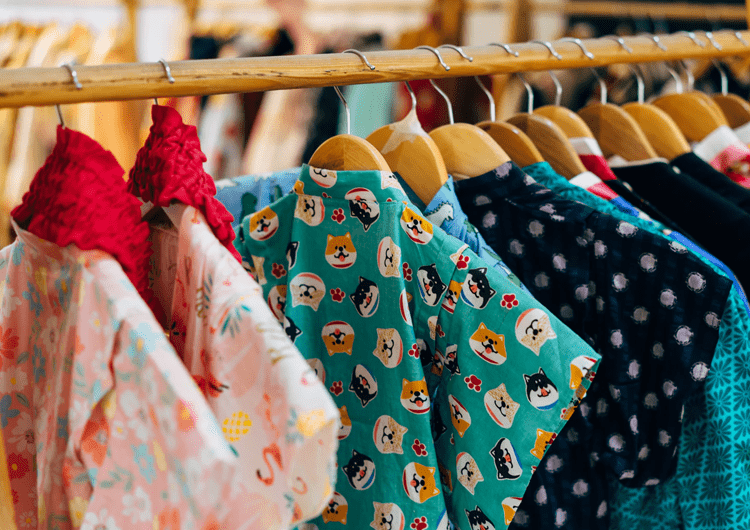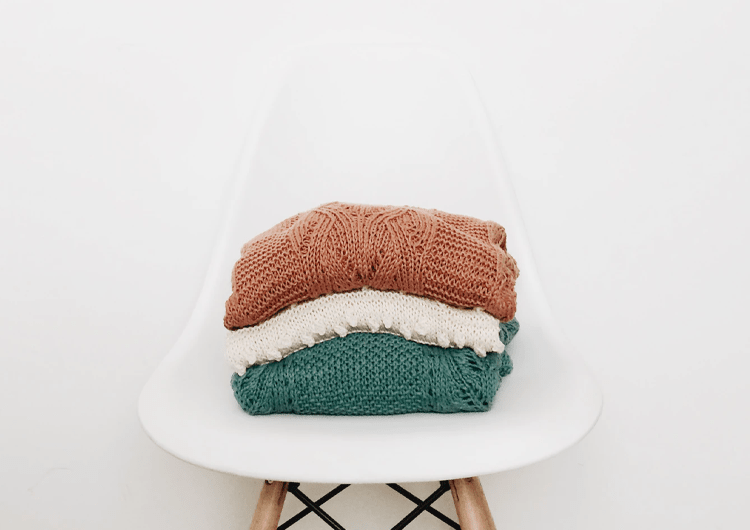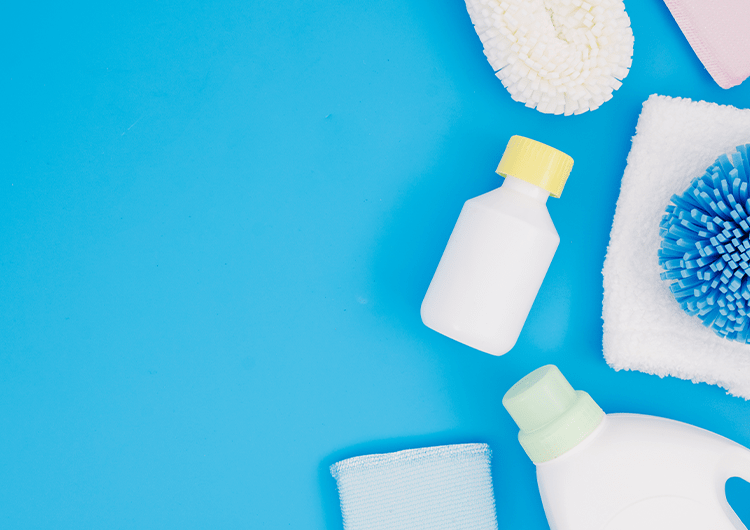You’ve probably dropped off clothes for dry-cleaning at some point in your life. After all, dry-cleaning is great! It’s a quick, easy, convenient, and safe way to clean your clothes. But have you ever wondered how dry-cleaning works?
A maid discovered dry-cleaning by accident in France during the 1840s. She tipped over a lamp on a soiled table cloth and found that the tablecloth was clean by the time it had dried. Since then, dry-cleaning has become a popular way of cleaning clothes. In this blog, we’re going to talk all about dry-cleaning and outline just a few of the many benefits you can expect from using a dry-cleaning service.

What is dry-cleaning?
Dry-cleaning is like home laundering except that a liquid solvent is used to clean your clothes rather than water and detergent. The solvent contains little or no water, hence the term “dry-cleaning”. Dry cleaners use very large and technically advanced computer-controlled dry-cleaning machines. Although the clothes do get wet, the liquid solvent used evaporates much more quickly than water.
The finishing process depends on the type of garment. Steaming is effective for removing wrinkles and also helps to remove any remaining water-soluble materials and kill bacteria.
Pressing helps produce crisp, smooth results, which would be difficult to replicate at home with a hand iron. After the dry cleaners press the garments, they will inspect the items one last time before they package them up to await collection.
What is dry-cleaning fluid?
Although dry-cleaning fluid has an interesting history, we won’t get into it too much here! During the 1930s, cleaners began using perchloroethylene or ‘perc’, which is highly effective and still used by many commercial cleaners today. It has a distinctive chemical odour and is carcinogenic to humans.
Meanwhile, green dry-cleaning is based on a carbon dioxide detergent system and cleaning machines that apply pressure to draw liquid carbon dioxide through fabrics to remove soil. There is no heat involved in the process, which makes it gentler to fabrics.

How is dry-cleaning done?
So, how exactly does dry-cleaning work? For each item cleaned, there is a set process that your garment undergoes before you can pick it up.
Garment tagging
Dry cleaners tag each item with an identification number which they pin or staple to the garment. This way, dry-cleaners can keep track of which item is which, and you can rest assured that they won’t accidentally lose your item.
Garment inspection
Before dry cleaners clean your items, they thoroughly inspect them to check for items left in pockets, rips, tears, or missing buttons. The dry-cleaner notes any problems before the cleaning process commences.
Stain Pre-treatment
Checking for stains is another important part of the inspection process because it allows the cleaner to treat any stains before cleaning. If you know what caused a specific stain, let the cleaner know so they can decide how best to treat it for the best results. During this stage, cleaners will often also remove delicate buttons or trim to prevent damage.
Machine dry-cleaning
The dry-cleaner will place the dirty clothes in a large drum machine where a water-free chemical solvent will clean them. The machine gently agitates the clothes in the solution, which helps soils to loosen. Afterwards, the solvent is drained, filtered, and recycled, and the clothes are rinsed in a fresh solvent solution.
Post spotting
Although the dry-cleaning process effectively removes stains, some other types of stains may still be present. All garments are post spotted to look for remaining stains, then treated with steam, water, or even a vacuum.
Finishing
As the name suggests, the final step involves finishing the dry-cleaning process. This may include steaming or pressing out wrinkles, reattaching buttons, or making repairs. After this step, dry cleaners hang or fold items in preparation for their return to the customer.

The benefits of dry-cleaning
Protects the colour and brightness of your garments
Dry-cleaning helps to protect the colour, brightness, and softness of your garment.
Extend the life of your garments
Contrary to popular belief, regular cleaning doesn’t damage your clothes. If you clean your clothes often, you’re extending its life! Frequent cleaning helps remove stains and ground-in dirt and soils, which can damage the fibres of your clothes.
By dry-cleaning your clothes regularly, you can ensure that you get the most out of them as possible.
Knowledge of fabric and materials
You probably know about the basic fabrics and materials, but dry cleaners have expert knowledge of a wide range of fabrics. They know how best to care for each type of material and deliver the best results.
Odour removal
Some dry cleaners have specialised knowledge of odour removal and employ an effective ozone treatment that eliminates odours and triggers the release of oxygen.
Preservation
We all have special garments that we want to keep in the best condition possible. Whether it is a wedding dress dry-cleaning, christening gown or other family heirlooms, it is important to know how to care for them properly. Preservation is a special type of storage that helps prolong the garment’s life for years to come. After all, it’s not just a garment, but a memory too.
Repairs and alteration
It’s not only cleaning that dry-cleaners are experts at! Alterations are one of the many additional services that they offer. Dry cleaners can repair loose buttons or sew on new ones if necessary.
It’s a quick and easy way of getting your clothes repaired, and you know you can count on the convenience and quality of good dry-cleaning. Many dry cleaners offer same-day dry-cleaning services so that your clothes will be ready as soon as possible.
Restoration
Dry cleaners can specialise in the restoration of old wedding gowns, heirloom items, and antique textiles. Due to their age and the materials used, these items are often very delicate and require special care. The level that they can restore them to depends on their original condition.
Stain removal
Dry-cleaning helps to dissolve grease and oils in a way that water cannot. Stains are divided into two main categories, solvent-soluble stains and water-soluble stains. Dry cleaners have taken the expert training to remove all types of stain safely.
Household furnishings
Did you know that dry cleaners don’t just clean clothes? Many cleaners also accept household items such as blankets, comforters, pillows, rugs, and even upholstery and curtains.
Protection of delicate fabrics during dry-cleaning
Some garments, such as neckties, use from delicate fabrics such as silk and require special care. If you’ve spilled something on your favourite tie or just want to spruce it up – a dry cleaner is your best option.
Protection against moths and insects
Clean clothes are the first line of defence against moth and insect damage. Insects can cause direct damage by feeding on the fabric, such as moths which feed on wool and wool blends.

How much does dry-cleaning cost?
Some people may be hesitant to choose dry-cleaning services because they cost more than traditional laundry. The good news is that with a bit of research, it’s easy to find a dry-cleaner who offers high-quality services at reasonable prices.
How to get the best results from your dry cleaner
Always read the labels
Plenty of people don’t pay much attention to the labels in their clothes or even rip them out. However, the label contains important information about how you should care for your garment. A dry cleaner should always reference the labels before cleaning, but you should also mention any special care instructions to ensure proper cleaning.
Don’t try to remove your own stains before dry-cleaning
It’s tempting to remove our own stains; however, this can cause more damage than help. You are likely to make the stain worse by pushing the oil, food, or dye deeper into the fabric. Instead, take your garments to the dry cleaners when you first notice the stain.
Point out any stains during drop off
If you notice any stains before dropping off your garments, make sure to point them out to the cleaner. This is important because it allows the cleaner to mark and pre-treat the stains before cleaning properly.
Point out any special buttons or embellishments
Help to protect your garments by pointing out any delicate buttons or embellishments that require special care. Point out any special embellishments and ask if the dry cleaner can remove them and if the items will be reattached as part of the service.
Make special care requests upfront
Always make sure to point out any delicate fabrics or embellishments upfront. If you leave it to chance, you may risk your items becoming damaged during the cleaning process.




